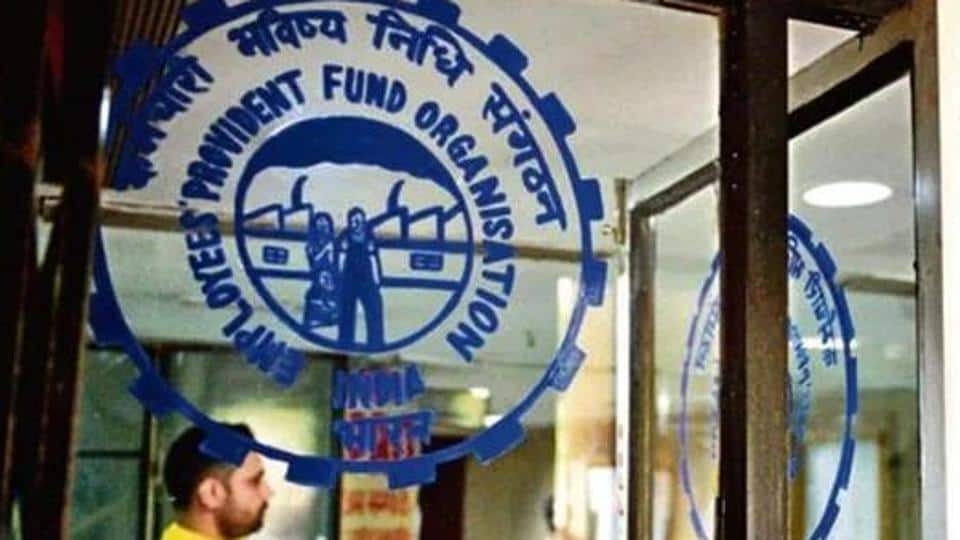Interest rate on employees’ provident fund deposits on Saturday was cut to a four-decade low of 8.1 per cent for the current 2021-22 fiscal from 8.5 per cent in the previous year.

Why Government is offering lowest interest rate on EPFO?
The lowest interest rate offered by the government on provident fund is because of low interest regime currently prevailing in the economy
This is the lowest interest rate since 1977-78 on deposits that employees make towards their retirement fund. Interest rate on employees provident fund that year stood at 8 per cent.
The 8.1 per cent interest rate was recommended by the Central Board of Trustees after its meeting in Guwahati under the chairmanship of Union Labour and Employment Minister Bhupendra Yadav, a labour ministry press statement said.
“The Central Board recommended 8.10 per cent annual rate of interest to be credited on EPF accumulations in members’ accounts for the financial year 2021-22 (ending on March 31, 2022),” it said.
The recommendation will now go to the Union Finance Ministry and will be notified once it is approved by it.
“The interest rate would be officially notified in the government gazette following which EPFO would credit the rate of interest into its subscribers’ accounts,” the statement said.
The EPFO paid 8.5 per cent interest rate to its subscribers in 2020-21, the same as in the previous year. The EPF rate was 8.65 per cent in 2018-19 and 8.55 per cent in 2017-18.
Provident fund savings are mandatory under the Employees Provident Funds and Miscellaneous Provisions Act, 1952. At least 12 per cent of an employee’s basic salary is compulsorily deducted to be saved in provident fund, while an employer co-contributes an equal amount.
The COVID-19 pandemic has strained EPFO’s earnings. EPFO delayed payments for 2019-20 and paid the interest in two instalments, deriving from two sources of its investments — 8.15 per cent from debt investments and 0.35 per cent from the equity portfolio.
What investments does the EPFO make?
After several years of debate and amid opposition by trade unions, the EPFO had decided to invest in equity and related investments via index ETFs (Exchange Traded Funds) in March 2015.
It was agreed upon to not touch the existing corpus and only put fresh contributions into the stock markets. This contribution was limited to 5% and then increased to 10% and eventually raised to 15% in 2017.
Equity related investments include ETFs based on Sensex, Nifty 50, Central Public Sector Enterprises (CPSEs) and Bharat 22 indices.
The remaining is invested in fixed-income assets like government securities, bank fixed deposits and private sector bonds
Before 2015, EPF contributions were purely invested in fixed income assets.
In 2018, the minimum investment limit in 'Debt Instruments and Related Category' of EPF investments was lowered from 35% to 20%.
As on September 2019, the total amount invested by EPFO in ETFs is ₹86,966 crore, as per a statement made in the Parliament.
The Finance Ministry is in the favour of allowing EPF investments in debt ETFs, provisions for which were not made earlier when EPFO started investing in the stock markets.
Many investors welcomed this decision because historically, equities have proven to hold the greatest potential to deliver the highest returns over the long term when compared to other asset classes. Since EPF is also a long-term investment, investing only in fixed income assets does not help beat inflation.
As of March 31, 2021, the EPFO corpus invested by SBI Mutual Fund in ETFs mimicking the Nifty 50 and Sensex 30 indices has given the retirement fund manager a return of 15.76 per cent as of March 31, 2021.
And the corpus managed by UTI MF has fetched an even better-annualised return of 16.37 per cent, the EPFO has calculated.
Why interest rate was reduced?
The lowest interest rate offered by the government on the provident fund is because of the low-interest regime currently prevailing in the economy.
The Reserve Bank of India has kept interest rates at record lows since the last 10 policy meetings to support economic growth which was ravaged by the Covid-19 pandemic.
Currently, the RBI's repo rate or lending rate is steady at a record low of 4 per cent and the reverse repo, or the rate at which it absorbs excess cash from lenders, is unchanged at 3.35 per cent.
With the RBI's interest rates at record lows the banks are also charging less interest rate on home loans, car loans, personal loans and other types of loans. State Bank of India, the country's largest lender, charges 6.7 per cent interest and even private lenders are offering home loans starting at the same interest rate.
Car loans are being offered by the State Bank of India in the range of 7.2-7.7 per cent, data from its website showed.
Consequently, the interest rate on deposits are also at lower levels, State Bank of India offers interest rate on fixed deposit tenor of 211 days to less than 1 year at 4.4 per cent and on longer-term fixed deposits with tenors of 2 years and 3 years are being offered at 5.1 per cent.
However, with rising inflation on the back of a surge in crude prices internationally after Russia invaded Ukraine and the spike in the price of various industrial metals due to supply chain disruptions over sanctions on Russia it remains to be seen when the low-interest regime cycle will turn with various central banks also hinting at hiking interest rates.
Earlier this month, US Federal Reserve Chairman Jerome Powell said that he supported a traditional quarter-point increase in the Federal Reserve’s benchmark short-term interest rate when the Fed meets later this month, rather than a larger increase that some of its policymakers have proposed, news agency Associated Press reported.
Related Stories
Explain Like I am 5
personal finance
From Savings to Recurring: We explain the different types of bank accounts
Team MintGenie